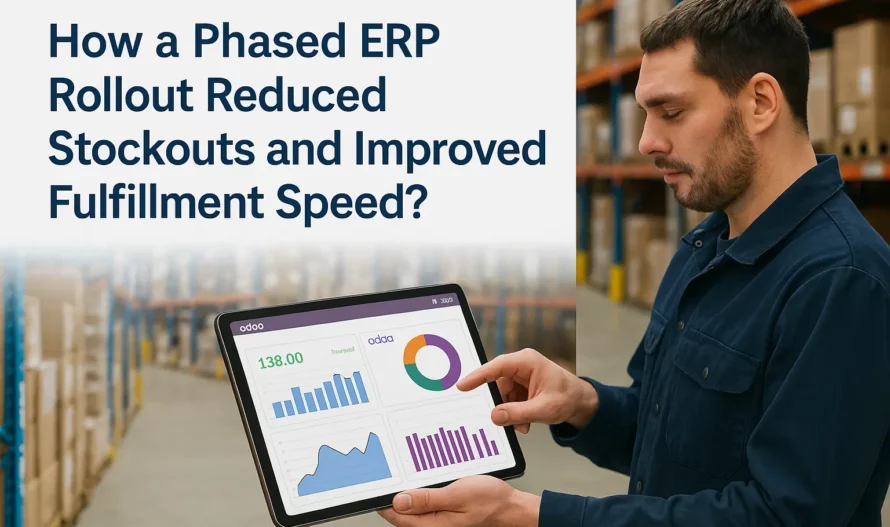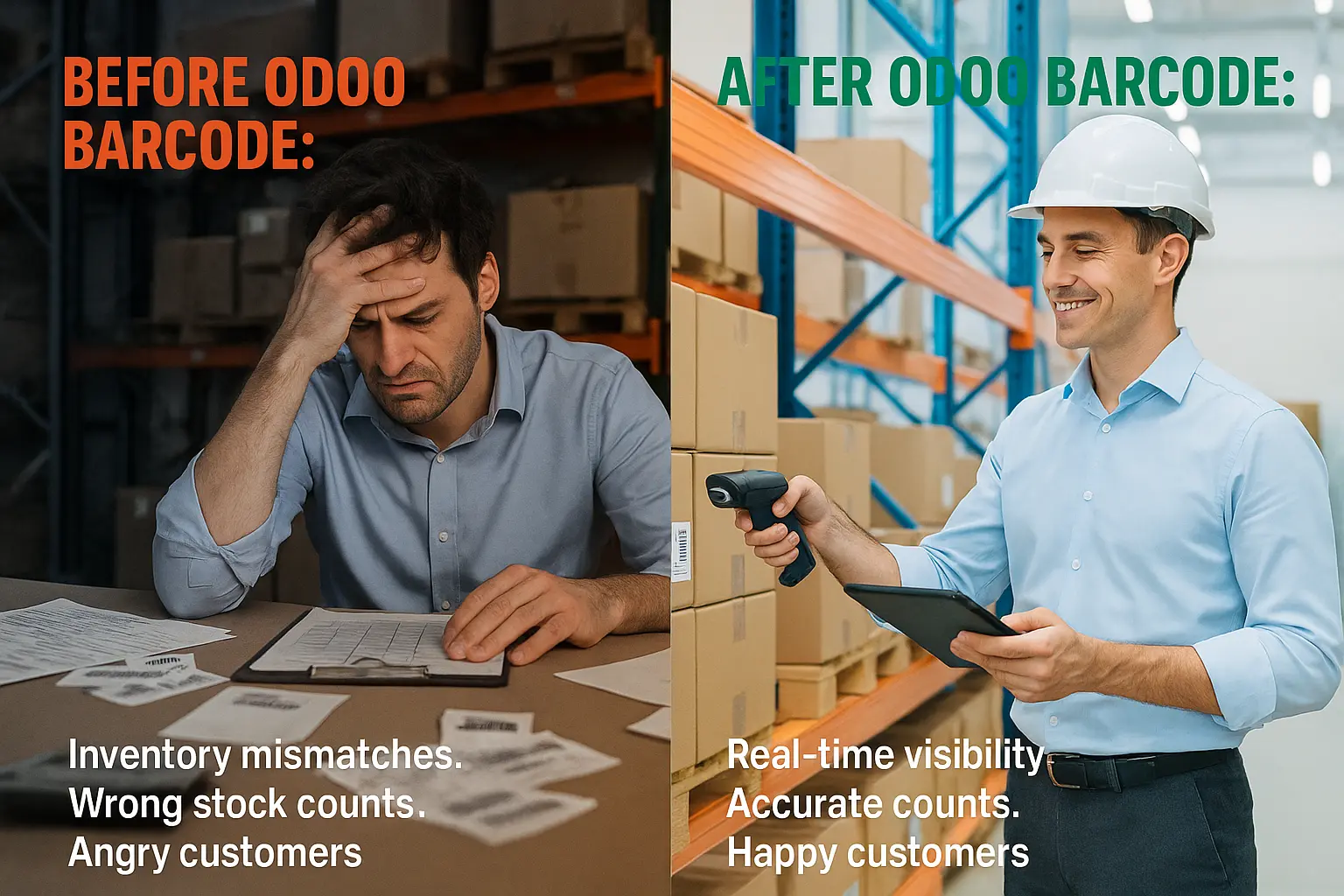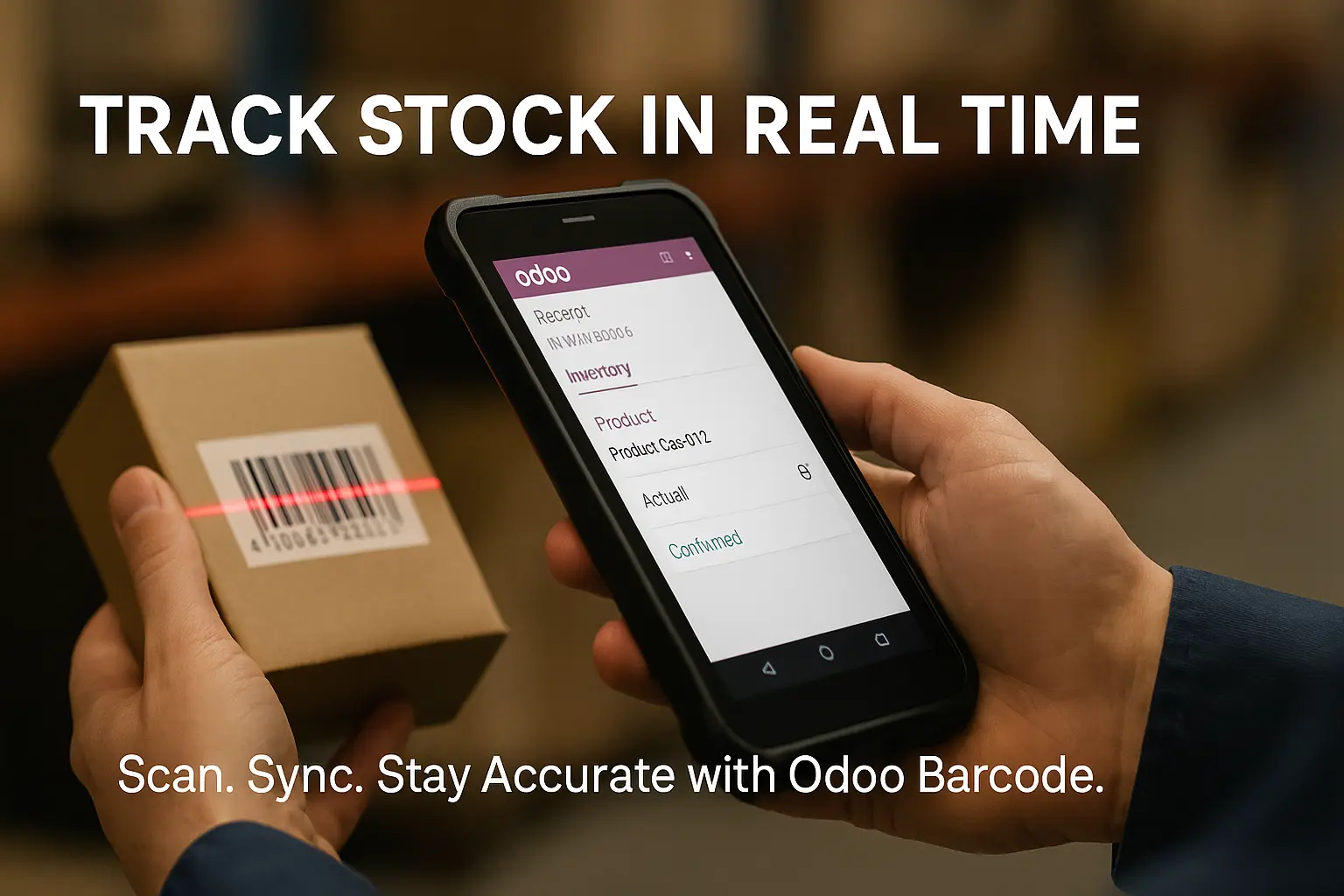How a Phased Odoo ERP Rollout Reduced Stockouts and Improved Fulfillment Speed?
12 Sep, 2025
5 min read
12 Sep, 2025
5 min read

Mornings in a logistics company in Qatar often start on tight schedules—and tighter nerves. By 10:00 AM, Operations Managers may already be addressing their third inventory issue of the day.
“We’re showing 500 units of a fast-moving item in one branch, but the floor team is only counting 200,” a warehouse supervisor might report. Meanwhile, at another location, staff may turn away customers even though fully loaded pallets of the same item are sitting in plain sight.
These aren’t one-off errors. As organizations expand from one warehouse to five or more, manual systems can no longer keep up. Stock mismatches, delayed transfers, and frustrated staff quickly become part of the daily routine.
That’s where we step in. With a phased rollout of odoo erp development, logistics companies in Qatar can eliminate stockouts, streamline fulfillment processes, and provide managers with a single source of truth across all branches.

When warehouses operate like islands, the result is almost always a logistics nightmare. One facility might use a modern inventory system, another could be running on a completely different solution, and smaller branches may still rely on spreadsheets. This disconnection leads to costly inefficiencies and reputational risks.
We often ask businesses a critical question—one that’s surprisingly hard to answer:
“How many different systems are you currently using to track inventory across locations? Do you have a unified view of your stock levels, or are you constantly playing catch-up with discrepancies?”
According to a peer-reviewed study, adopting automated inventory management systems with IoT integration can reduce carrying costs by 20–30% and stockout incidents by 35–45% in small to mid-sized enterprises (ResearchGate). For any growing logistics company, the opportunity to cut costs and improve reliability is too big to ignore.
But what happens without that unified approach? Imagine this: during peak season, a major client requests urgent delivery of temperature-sensitive products. The system indicates the stock is available, but the items were transferred to another location weeks ago without proper updates. The order gets delayed, trust is lost, and the client looks elsewhere.
This is exactly the type of challenge we can solve with a unified ERP platform such as Odoo’s multi-branch inventory control. Instead of relying on disconnected systems and manual updates, we can bring every warehouse onto a single source of truth—giving leadership real-time visibility into stock levels across all locations.
With BiztechCS; that means
Struggling with similar inventory challenges across multiple locations? Many growing logistics companies face the same barriers—and the right ERP approach can turn those pain points into strengths.

Step inside a typical warehouse, and the contrast is striking—state-of-the-art storage systems and material handling equipment—but inventory tracking that feels a decade behind.
The hardware may be impressive, but without modern systems, teams are essentially flying blind when it comes to knowing what they actually have in stock and where it is located.
This is where we can begin the transformation—with Odoo barcode inventory management. Rather than attempting a company-wide overhaul from day one, we can focus on the highest-volume warehouse first. This approach delivers immediate results while building confidence for the broader rollout.
Think about this…
When you receive new inventory, how long does it take for the stock to be accurately reflected in your system as available? Are you losing sales opportunities during that gap?
For many growing companies, the answer is sobering—sometimes up to 48 hours, during which potential sales slip away to competitors who can confirm availability instantly.
With Odoo barcode scanning in place, that gap disappears. The moment a product is received and scanned, it will instantly update availability across all connected branches and customer portals.
Picture the reaction: the first time a supervisor scans a product and sees it appear as available stock in real time, the sense of relief is immediate. After years of delays and discrepancies, that instant visibility feels like a breakthrough.
This is why we recommend starting with receiving and shipping—the two points where accuracy matters most to customers—because they deliver the fastest return on investment.
And the impact is measurable: according to a 2023 report, companies that leverage end-to-end inventory automation reduce holding costs by 25% and improve order fulfillment speed. Another research study shows that real-time visibility further drives performance, with 50% fewer out-of-stocks and a 10% improvement in perfect order delivery.
Once the foundation is in place at the central warehouse, the next step is to connect all locations to a single Odoo warehouse management system (WMS). The goal is to create a single source of truth for inventory across all branches.
Now, imagine the difference. Today, managers often need to make multiple phone calls to verify stock availability across different locations. With a unified system, they can view real-time inventory levels from a single dashboard.
Think about the time wasted. Many logistics teams spend hours determining the location of products. By implementing connected visibility, we can free up that time for customer service or business development instead. For a growing 3PL, that could mean saving three hours a day, time that directly fuels growth.
And the customer impact? Instead of customer service managers calling around each branch to confirm availability, they will be able to see where products are located instantly and automatically route orders to the nearest facility.
For multi-branch 3PL operations, the benefits go beyond visibility. With Odoo’s WMS, we can optimize inter-branch transfers. When one warehouse runs low on a popular item, the system automatically identifies which branch has excess stock and generates transfer recommendations, reducing both shipping costs and delivery times.
Ready to explore how real-time inventory visibility could transform your operations? BiztechCS specializes in phased ERP implementations that deliver results quickly while building toward comprehensive transformation. Let’s discuss your specific challenges and opportunities.
Once visibility is achieved across branches, the next step we can deliver is automation—removing the manual work that drains time and creates costly errors.
With accurate, real-time data flowing across all warehouses, we can configure Odoo WMS to trigger replenishment automatically. When stock levels drop below set thresholds, purchase orders will be generated instantly and sent to suppliers—no manual chasing, no last-minute panic.
Here’s something to consider:
“How often do you find yourself in emergency procurement mode—rushing to order products you should have reordered weeks ago? What would change if your system could predict and prevent these situations?”
With automation in place, that shift can eliminate emergency orders that often incur rush fees of 15–20%.
And it doesn’t stop there. We can leverage Odoo’s algorithms to recommend the best stock distribution across branches based on historical demand and seasonal trends. Instead of reacting to shortages, the system will proactively position products where they are most likely to be needed.

If you pursue this phased transformation with us, the numbers we can help you achieve within 90 days of going live may look like this:
Operational Efficiency
Customer Impact
Financial Performance
Instead of mornings filled with crisis calls, managers will be able to start each day with a clear view of stock across all warehouses—knowing the system is already optimizing transfers, replenishment, and availability.
This type of transformation doesn’t happen overnight. It requires a phased, structured approach:
With our experience in ERP for logistics, we can bring together the winning formula that combines industry expertise with technology. For 3PLs, that means navigating the complexity of managing inventory for multiple clients while maintaining peak efficiency.
Every business has unique challenges, but the principles of phased ERP implementation remain consistent. BiztechCS brings deep expertise in Odoo implementations specifically designed for logistics and distribution companies. Let’s explore what’s possible for your operation.
This story shows what’s possible when fragmented inventory systems are unified. The same transformation can occur for your operation as well.
Ask yourself:
If so, Odoo WMS offers a proven path forward. The question isn’t whether the technology works—it’s whether your business is ready to unlock its potential.
We can deliver this change through phased Odoo implementations explicitly designed for logistics and distribution companies across the GCC. By starting with your most urgent pain points and scaling up, we will help you transition from a firefighting mode to a growth mode.
Ready to see what this transformation could look like for your business? Let’s start with a conversation about your current challenges—and design a path toward measurable results.

Artificial Intelligence (AI)
74
By Uttam Jain
10 Dec, 2025

Artificial Intelligence (AI)
171
By Afzal Qureshi
09 Dec, 2025

Artificial Intelligence (AI)
167
By Afzal Qureshi
09 Dec, 2025